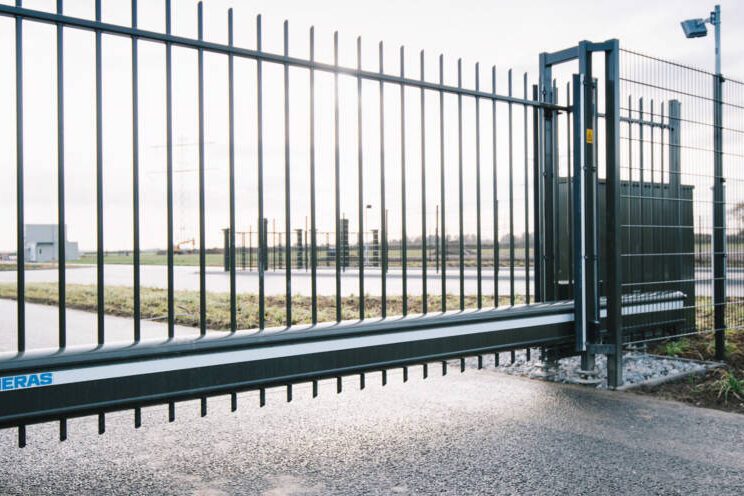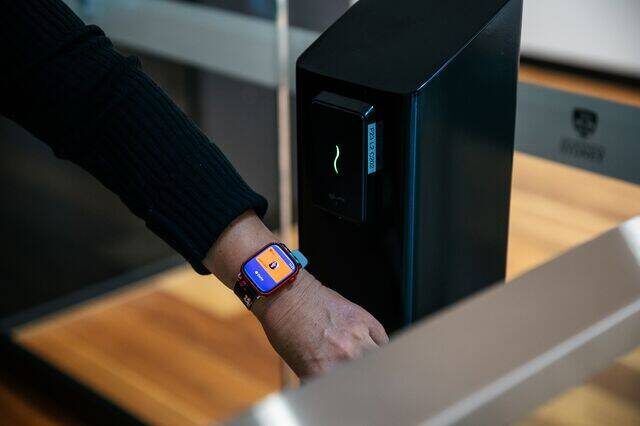Over the past year and a half airports around the globe have had to re-evaluate how they regulate their airport security, while minimising the spread of Covid-19
Airports around the world have been confronted with a sudden change that has steered them off their regular course. The COVID‑19 pandemic has resulted in a monumental shift in airport operations. According to ACI World, global passenger traffic declined by an unprecedented -94.4% year-over-year in April 2020. Airports are now faced with uncertainty and pressing decisions to make, in order to get back on track as swiftly and smoothly as possible.
Now more than ever, airports are relying on each other to share knowledge and best practices to ensure their airports are ready to receive passengers again. To help facilitate this conversation, Jared Mossman, Business Development Manager at Genetec, hosted two private roundtables with eight leading airports from across North America.
- Chicago O’Hare International Airport (ORD),
- Denver International Airport (DIA)
- JFK International Air Terminal (JFKIAT)
- Seattle Tacoma International Airport (SEA)
- Tampa International Airport (TPA)
- Boston Logan International Airport (BOS)
- Salt Lake City International Airport (SLC)
- Toronto Pearson International Airport (YYZ)
The purpose of the event was to gain insights and share best practices on the changes they’re experiencing with other airports in the region. During the conversation many interesting questions were discussed, so we decided to compile the answers below and share it with the extended airport community.
- What are some initiatives that your airport has taken to boost passenger confidence and prepare for a safe reopening?
All of our airport panelists had the same base initiatives: Increase spacing at all passenger checkpoints, such as floor guidance marks and alternate gate and lane usage; place numerous hand sanitising stations across the airport terminals; set up barricades and plexiglass at all interaction points, such as check-in and immigration counters, and implement enhanced cleaning methods throughout the airport.
In particular, Seattle Tacoma International Airport stressed the importance of the visible presence of janitorial staff in the airport to help regain passenger trust. As airports are focused on passenger experience, maintaining a safe environment plays a large part in rebuilding their confidence.
Wearing masks is mandatory among airport staff, while passengers are recommended to wear a mask both in the airport and on aircraft to limit any possible transmission of COVID‑19.
- 2. What were some of the first responses when your airports were faced with the lockdown and the passenger travel ban?
As the effects of COVID‑19 came as a surprise to many, resiliency and reconstitution plans had to be put together in a short period of time to give clearer direction, in terms of newly developed policies and the next steps for airports, not just for travelers but for employees as well.
JFKIAT and Boston Logan Airport explained that they formed a dedicated team of employees in their airport to better manage COVID-19-related concerns and action plans. JFKIAT said that they’ve put working groups in place to brainstorm ideas for employees, passengers, and existing tenants in their terminal, to better support them during this period of change.
Boston Logan Airport explained that the newly erected Project Management Office team within their airport acts as a key consultant to the executive board in making decisions related to COVID‑19, while also helping different departments streamline and coordinate plans to avoid any duplication of work related to the matter.
- What major process or procedural changes were made at your airport?
The panelists all agreed that procedural changes are highly reliant on local government policies and regulations. Hence, the airports must adapt their procedures according to the directions given, to ensure compliance with local regulations.
Salt Lake City Airport and Tampa Airport pointed out the heightened restrictions surrounding airport entry, limiting access to ticketed passengers, extra assistance persons, and badged staff, to reduce the concentration of people in an area.
Denver International Airport described the temporary changes in their airport, which include transporting airside employees to sites with buses. “We didn’t want to jam-pack employees on buses, creating health concerns that way”, explained the panelist from DIA. This led to the conversion of the economy parking space situated next to the main terminal, to airside employee parking for easy access and reduced touchpoints while the number of passengers in the airport remains limited.
- What major technological and operational changes were made at your airport?
Denver International Airport discussed its implementation of facial authentication access control in areas of high throughput, to help reduce contact and potential contamination.
Chicago O’Hare Airport expressed interest in the employee mobile application that was deployed in Denver International Airport, to communicate new information and updates to badged employees regarding changes in airport procedure. They explained the benefits they could reap from this solution, as they have over 40,000 badged employees to manage daily.
Trials for thermal cameras that conduct temperature checks have been piloted in most airports, however, challenges arose when searching for an accurate solution with low false positives. Therefore, no specific implementations have been made yet.
Toronto Pearson Airport shared their efforts in testing a touchless travel experience for passengers from check-in to take-off, with Air Canada. It’s still a work in progress, but Toronto Pearson believes that this is the future of travel and that we should be seeing more airports and airlines pivot towards contactless technology.
- What are some of the major challenges you’re currently facing?
Among the different challenges discussed during the roundtable, one of the main topics of conversation was the ability to adapt and keep up with the constant changes in regulations and policies set by government officials. The panelists expressed the difficult process of bringing these changes to paper, having them signed, while still needing to amend and make new adjustments every day.
Airports are also challenged when it comes to deciding how much money should be invested into a problem, as there’s no certainty as to exactly how long it’ll last. Many airports debate about their investments, as they try to assess whether or not the technology could become obsolete after a short period of time, given the constant changes in policies and requirements.
Discussions on who should be the authority to enforce mask-wearing, physical distancing, and body temperature checks are also in question. Which stakeholder in the airport should be responsible for holding up these rules and recommendations?
- How do you determine what makes the most sense with the constant regulation changes? How do you stay focused?
As most of the required changes are out of their control, flexibility seems to be the most important criteria to get airports through this phase of uncertainty.
However, one thing is certain among all airports — they’re determined to provide a positive experience to all travelers. Therefore, they’re doing what’s necessary to deliver a seamless journey from drop-off to take-off, while still ensuring that passengers feel safe and confident in their travel experience.
- What are you doing to keep staff confident in their return to work?
Salt Lake City Airport addressed frontline employee concerns by making high-end personal protective equipment (PPE) available to them, including N95 masks, safety glasses, face shields, and gloves. Their planned move to a new office facility also provided them a testing ground to further improve layout and set-up, to better meet hygiene standards for their employees.
Boston Logan explained the different routes that their airport has taken, by having a rotation among willing employees to come back to the office every day. Each unit would send in one person per day to the office. This initiative has been a success, explained the panelist, as employees feel refreshed that they don’t need to come into the office every day, while still feeling safe and engaged in the day-to-day happenings in the airport.
JFK Airport, on the other hand, has implemented its own intranet site to effectively communicate news and updates with their employees, as most of the staff are still working from home.
- How are you working with different stakeholders within the airport?
To ensure health, safety, and security at airports, they need to have a strong cooperative relationship with government agencies, such as Transportation Security Administration (TSA), Customs and Border Protection (CBP), and Canadian Air Transport Security Authority (CATSA), to name a few.
With that said, Boston Logan Airport hosts daily virtual meetings with their airport stakeholders — including airlines and government personnel — to discuss factors like passenger count and staffing levels, which help increase operational efficiency.
Other collaborative efforts were discussed, including testing new technologies like ultraviolet (UV) lights for bin disinfection during TSA hand-carry checks, and thermal cameras for passenger temperature checks.
- What technology are we likely to see stay around in the long run?
All panelists unanimously agreed that touchless technology, although costly to implement, is the future of travel. Biometric gates with facial recognition capabilities and virtual travel IDs are being trialed or gradually deployed in different airports to build a more contactless travel journey for passengers.
Salt Lake City Airport received great feedback on their new janitorial solution for sanitising revolving handrails on escalators. They believe that the investment return on this is extremely high given that it’s inexpensive, highly visible to passengers, and very effective. Therefore, they expect the system to stay relevant to their airport operations in the long run, due to the added value it provides to their passengers.
The digitisation of printouts such as promotional brochures for tourists is also expected to take place. Boston Logan Airport shared their initiatives on the matter and expanded on it by discussing their intention to convert digital signage that was previously touchscreen, to voice-activated systems.
- What are some lessons learned from this whole experience?
Strong collaboration and communication among all stakeholders are essential in an airport’s road to recovery.
Although technology can create additional barriers in mitigating the risk of exposure to the virus, it alone is not the cure. Making sure the community at large is aware of the severity, to take the necessary self-regulatory measures when in public spaces, will ultimately make the difference. As the panelist from Seattle Tacoma Airport highlighted, “A knowledgeable, informed passenger is a happy passenger.”
Both Seattle Tacoma Airport and Tampa Airport emphasised the significant efforts their airports have taken to increase awareness within the community, using open blogs, corporate videos, articles from national news agencies for reaching more potential passengers, and signage throughout the airport.
Our panelist from JFKIAT summarised the key takeaways well: “As we are constantly chasing this, if we try to come up with solutions beforehand, we will always be behind the ball. So, do what you can to maintain safe distance and a safe environment for your employees, keep investigating, look at technologies out there, see what others are doing, and continue to collaborate. That’s all we can do at this point because it is a constantly moving target”.
Commentary: Neil Killick, Milestone Systems
A post-pandemic world will be very different to the world we inhabited in 2019. However, the same priorities apply when considering security technology – It must be efficient, reliable and secure, and above all, keep people safe. The COVID-19 pandemic sparked rapid advances in technology, accelerating some developments by years, in just a matter of months. Working with a sense of responsibility to safeguard workers, commuters and the general public, companies worked as a community to fast-track technologies, such as face-mask detection, crowd control and people counting. If we look at some of the sectors hit hardest by the pandemic, such as public transport or retail, then the security technologies we can expect to see play a vital role in a post-pandemic world include applications that allow operatives to manage their systems with real-time alerts, and the ability to respond quickly.
One requirement created by the pandemic that is likely to remain, is the need to know who is entering and leaving a facility, and how many people are in a building at any given time. By using the cameras already deployed to generate real-time video analytics data, an access/occupancy management solution can be used to standardise, digitise, and automate standard operating procedures (SOPs). These types of video analytics can also be used to inform other activities, like cleaning processes or to make informed operational decisions, such as making better use of office space. The pandemic also created a need for visitor management and access management screening checkpoints.
To stay up to date on the latest, trends, innovations, people news and company updates within the global security market please register to receive our newsletter here.
Media contact
Rebecca Morpeth Spayne,
Editor, Security Portfolio
Tel: +44 (0) 1622 823 922
Email: editor@securitybuyer.com









